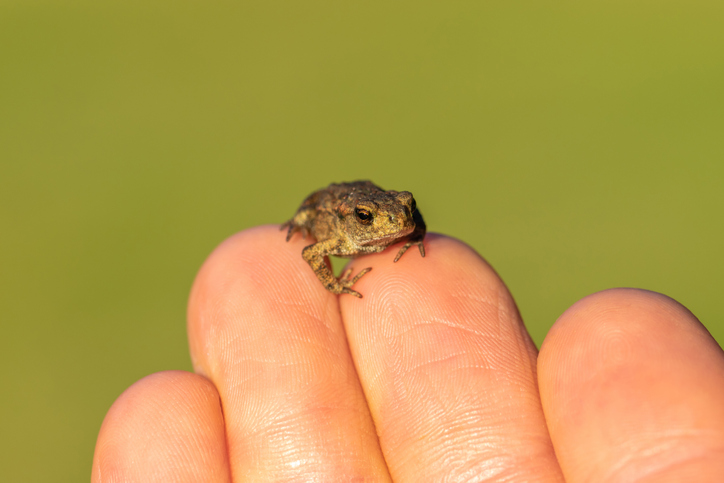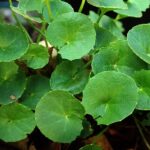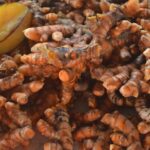Dear Annie, I have been battling a wart on my finger for the last 20 years. I’ve seen multiple dermatologists and even an orthopedic surgeon who can’t seem to figure out exactly how to get rid of it. They keep telling me there is very little wart tissue left. Yet, the skin around it is red and hard to treat. I am very big on natural remedies and am at my wits’ end. I want to get rid of this once and for all. Is this something you can help me with?
Thank you for reaching out. Warts can be such a nuisance.
About Warts
Warts are a skin infection caused by the Human Papilloma Virus (HPV). HPV is a family of viruses that affect the skin and mucus membranes. It has over 100 different strains, about 60 manifests as warts. Common warts usually develop on the skin of the hands and feet (but can form anywhere). The other HPV strains cause genital warts. Genital warts infect the soft moist mucus membranes of the body. Please see” Natural Solutions for HPV and Genital Warts” for more information.
Most common warts (on the skin) are slow growing and non-cancerous. The virus enters the skin through an opening, like a cut or scratch. Once inside, the infection causes an excess of a hard protein called keratin to buildup in the epidermis (the outermost layer of skin). There are several different types of warts and although not usually painful, can vary in size, shape, and color.
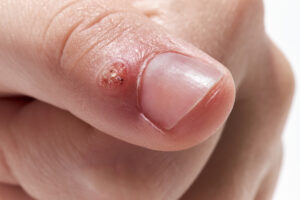
Warts are slightly contagious but are not normally considered dangerous. Warts can infect anyone, at any age. Children and adolescents are more prone them because their immune system is still building. Once a person is infected, the wart will typically resolve itself in a year or two on its own, with no action on our part.
Sometimes the infection doesn’t go away, as in your case. When this happens, it may be best to include support for the immune system into the treatment protocol to eliminate any internalized viral infection. Also, whatever solution you choose, stick with it. This has been going on for a long time and will likely take months to resolve. Stay true to the course, even if you feel it has stopped working.
Natural Solutions for Warts
When presented with a long-lasting skin issue, like warts, it’s a good bet that the system is bogged down with excess toxins. When this happens, the body’s cleansing mechanisms (the liver, lymph, kidneys, and skin) are not able to keep up. As a result, the immune system can become depressed, or over stimulated, and other systems like digestion or sleep can also be affected. Herbs like Barberry (Berberis vulgaris or spp), Turmeric (Curcuma Longa), Poke (Phytolacca decandra), Gotu kola (Centella asiatica), Dandelion (Taraxacum officinale), Burdock (Arctium lappa), and Violet (Viola tricolor) can help heal the skin, support, or enhance liver and kidney function, and encourage lymph drainage.
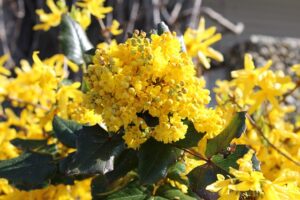
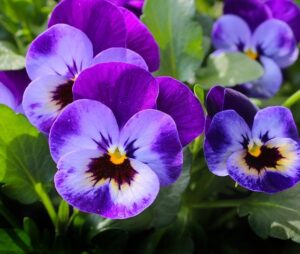
Anti-viral herbs address the HPV virus directly. Immune strengthening botanicals support the immune system in a positive way. For these actions, Echinacea (Echinacea angustifolia), Chaparral (Larrea tridentata), Garlic (Allium sativum), Poke (Phytolacca decandra), Turmeric (Curcuma Longa) and/or Gotu Kola (Centella asiatica) are likely to prove useful.
Antineoplastic herbs decrease or prevent abnormal tissue growth.
Please see the graph below for ideas about specific botanicals and their uses.
Alteratives – Blood cleansing herbs | Immune system support | Anti-Virals | Antineoplastics (Prevent abnormal tissue growth) |
Chaparral (Larrea tridentata) | Chapparal (Larrea tridentata) | Chapparal (Larrea tridentata) | Chapparal (Larrea tridentata) |
Barberry (Berberis vulgaris or spp) | Thuja (Thuja occidentalis) | Thuja (Thuja occidentalis) | Thuja (Thuja occidentalis) |
Turmeric (Curcuma Longa) | Turmeric (Curcuma Longa) | Turmeric (Curcuma Longa) | Turmeric (Curcuma Longa) |
Poke (Phytolacca decandra) | Poke (Phytolacca decandra) | Poke (Phytolacca decandra) | Poke (Phytolacca decandra) |
Gotu Kola (Centella asiatica) | Echinacea (Echinacea angustifolia) | Neem (Azadirachta indica) | |
Burdock (Arctium lappa) | Gotu Kola (Centella asiatica) | Lemon Balm (Melissa officinalis) | |
Dandelion (Taraxacum officinale) | Garlic (Allium sativum) | Garlic (Allium sativum) |
For best results, plants are not chosen at random. Each choice is based on the broader need of the individual. What does that mean? We are more than a wart, or any presenting problem. Every herb has several actions, effecting mind, body, overall system, emotions etc. Each person is unique, whole, and complete. We all have a history, background, constitution, lifestyle, etc. Herbal remedies work much better when plant “personalities” and uses are matched with the one using them and their overall needs. Then, keeping all of this in mind, along with the goal of “no more wart,” a protocol is formulated.
The Herbs
Here are a few of herbs that come to mind when a hard-to-get-rid-of wart comes up. Notice that each is listed in several of the categories above. Most work best in formula, and when taken both internally and applied externally at the same time.
Chaparral (Larrea tridentata)
Also called Creosote bush, Chaparral contains several compounds that work together to produce anti-viral, anti-bacterial, and anti-inflammatory actions. It’s use interrupts viral replication so new generations are blocked from reproduction. It helps improve overall cellular function, making cells less susceptible by improving the internal environment. Chaparral stimulates the immune system, so we have better resistance, all of this, while at the same time promoting system-wide detoxification and reducing lymph and liver congestion. Pretty cool!
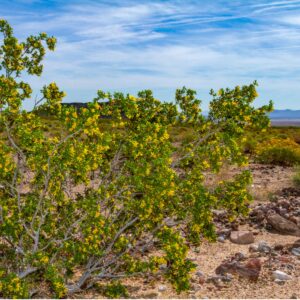
Thuja (Thuja occidentalis)
Also called Arborvitae, Thuja is a potent anti-viral specific for warts, both common and genital. It’s use enhances the immune system, clears lymph stagnation, and reduces abnormal tissue growth and degeneration.
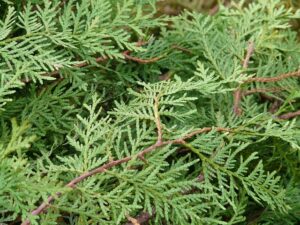
For best results, it is suggested to take small doses of thuja internally, while applying externally onto the wart. Most resources suggest applying the tincture or tea externally, diluted in 2 to 4 parts water. Thuja is toxic in large doses and should only be taken in drop doses, with the guidance of a qualified herbalist.
Thuja essential oil is very popular today. I have used it with some success externally, added to a larger formula and in an oil or salve. In my experience, Thuja essential oil is best heavily diluted to .5 or 1%. It should never be taken internally.
Poke (Phytolacca decandra)
Poke root is an effective anti-viral and lymphatic that stimulates the immune system and reduces lymph and liver congestion. Poke helps prevent and reduce abnormal growths and heal the skin and mucosa.
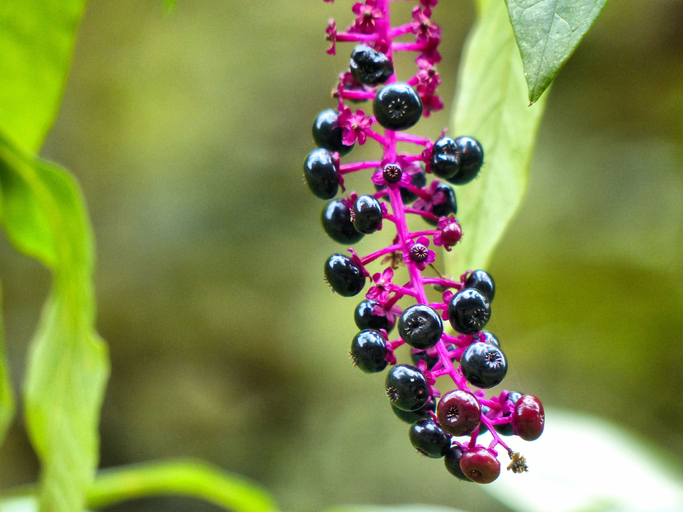
Turmeric (Curcuma Longa)
A versatile herb with antiviral, antifungal, antibacterial, and antineoplastic properties, Turmeric helps break down the biofilms in all sorts of infections. It also works to gently energize and modulate the immune system. Turmeric stimulates digestion and the liver to help rid the system of built-up toxins, while soothing and healing the skin, and gut mucosa.
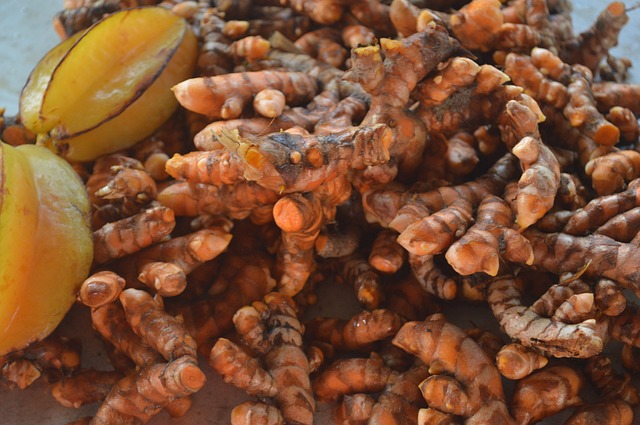
Gotu Kola (Centella asiatica)
I love this herb, it’s one of my favorites. (I know, I say that all the time.) Gotu Kola is an immunomodulator, a smart herb that brings the immune function back to balance whether it’s overactive or depressed.
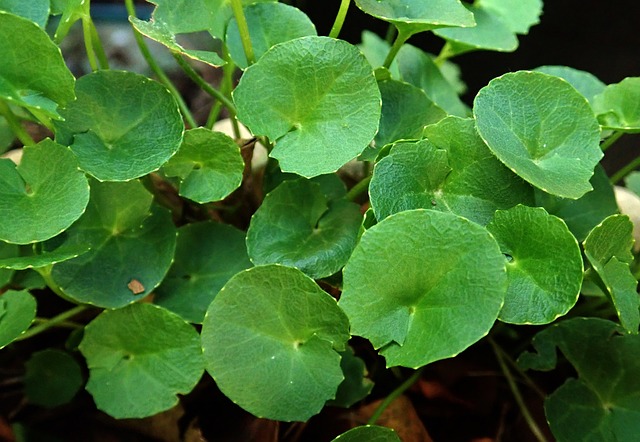
Externally, Gotu Kola is specific for red irritated tissue, and for dry scaly skin. It’s perfect for skin that presents in the case of warts. The herb is especially useful for resolving keloids. (Keloids are the raised, thick, scar-like, skin produced around a wart or old wound.)
Garlic (Allium sativum)
Garlic is an amazing healing agent. One found in almost every kitchen. Garlic is a broad spectrum anti-microbial that works with viral, bacterial, fungal, and parasitic infections. Below is an “Old Wives” recipe for resolving most skin-based warts.
Herbal Recipes for Warts
“Old Wives - Get rid of Warts”
Every night before bed cut a garlic clove in half and place on it on the wart. Cover with a small piece of tape or a band aid to keep it in place. In the morning remove the garlic.
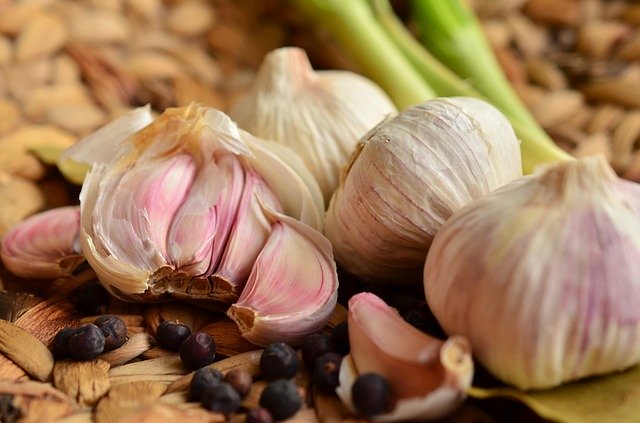
Repeat for a long as needed. (Wart removal can be a lengthy process.) For faster action, replace the fresh garlic both day and night. Take a break from treatment for a few days if the skin becomes irritated or painful.
Wart Resolution Extract (one possible formula)
- 3 parts Chaparral (Larrea tridentata) Tincture
- 3 parts Turmeric (Curcuma Longa) Tincture
- 2 parts Gotu Kola (Centella asiatica) Tincture
- 1 part Thuja (Thuja occidentalis) Tincture
Apply externally to wart 3 to 4 times per day. Take 30 drops 3x per day internally diluted in 1-ounce lukewarm water.
Wart Oil/Salve
I’ve hade really good luck with both common warts and genital warts by applying an oil or salve made with infused Chaparral leaves and about 5 drops of Thuja essential oil per ounce of mixture.
Product Suggestions
Further Reading
References
https://www.mayoclinic.org/diseases-conditions/common-warts/symptoms-causes/syc-20371125
https://my.clevelandclinic.org/health/diseases/15045-warts
Jones, Eli MD; Definite Medication; Therapeutic Publishing co inc., Boston Massachusetts, 1911
Tierra, Michael L.A.c, O.M.D; The Way of Herbs; Pocket Books, NY, NY, 1998
Holms, Peter; Energetics of Western Herbs Volume 2; Snow Lotus Press, Boulder, Co 2006
Disclaimer
The statements and ideas presented here are not intended to diagnose, treat, cure, or prevent any disease or condition. They have not been evaluated by the FDA. All ideas presented are for the sole purpose of education. To help you take control of your own health. If you have a health concern or condition, consult a physician. We suggest that you always consult a medical doctor before modifying your diet, using any new product, drug, supplement, or doing any new exercises.
These statements and products have not been evaluated by the FDA. They are not intended to diagnose, treat, cure, or prevent any disease or condition. If you have a health concern or condition, consult a physician. Always consult a medical doctor before modifying your diet, using any new product, drug, supplement, or doing any new exercises.
Herbs taken for health purposes should be treated with the same care as medicine. Herbal remedies are no substitute for a healthy diet and lifestyle. If you are serious about good health, you’ll want to combine diet, exercise, herbals, a good relationship with your doctor and a generally healthy lifestyle. No one of these will do it alone.
This information is designed to be used as part of a complete health plan. No products are intended to replace your doctor’s care, or to supersede any of his/her advice or prescriptions.

